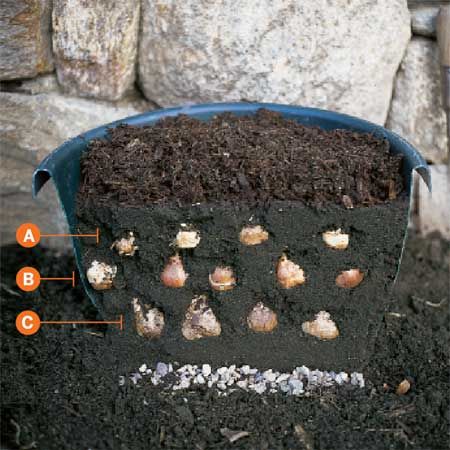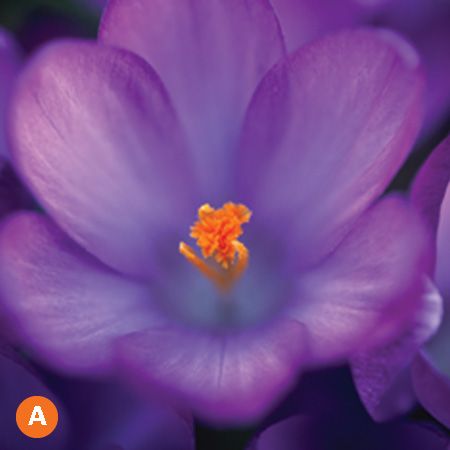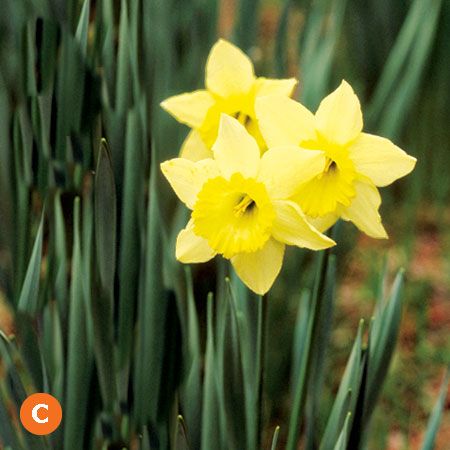Spring is the season for fresh beginnings, and what better way to celebrate than with a continuous burst of colorful blooms? By using the “sandwich” bulb planting technique, you can layer different bulbs in one container for continuous blooms that last for up to six weeks. Follow this easy guide to bring vibrant spring flowers to your patio or garden.
Staggering Bulbs

The secret to a long-lasting display of spring flowers is to stagger layers of bulbs that bloom at different times. Plant early bloomers like crocuses, mid-season bloomers like tulips, and late bloomers like daffodils in the same container. This method allows you to enjoy flowers continuously throughout the spring. It’s perfect for brightening up outdoor areas like decks, patios, or balconies.
For successful “sandwich” bulb planting, you’ll need a container that’s about 12 inches in diameter and 12–14 inches deep. For this size container, plan on using about nine crocus bulbs, seven tulip bulbs, and five daffodil bulbs. This combination provides a full, balanced look once everything starts blooming.
How To Layer Your Bulbs
To create your “sandwich,” you’ll need a container with good drainage, quality potting soil, and a mix of bulbs. Follow these simple steps:
- Start by adding a 1-inch layer of pebbles to the bottom of the container. Make sure there’s a drainage hole, or drill one if needed.
- Add 4 inches of high-quality potting soil and mix in a tablespoon of 10-10-10 fertilizer.
- Place the daffodil bulbs flat-side down, with their pointed ends facing up. Space them evenly, making sure they don’t touch.
- Cover with soil. Add just enough to cover the daffodil bulbs.
- Add the tulip bulbs, staggering them over the daffodils so that they aren’t directly on top of each other.
- Cover with another layer of soil and repeat the process with the crocus bulbs.
- Finally, cover the “sandwiched” bulbs with 1–2 inches of mulch and water thoroughly.
Maintain moist soil throughout the fall. In climates with very cold winters, store the container in an unheated garage or shed until warm spring rains encourage the first shoots to appear.
Bulbs for Your “Sandwich” Garden
Let’s take a closer look at these three popular choices for your bulb sandwich and how they fit into your blooming sequence.
Dutch Crocus

The first to bloom, these early spring flowers bring shades of lavender and purple to your garden. The Dutch Crocus (Crocus vernus species) grows about 4 inches tall and should be planted in the top layer. Their shallow planting depth means they emerge quickly once the weather warms up, providing the first pop of color in your display.
Dutch Crocuses are also relatively low-maintenance. They’re resilient and can adapt to different soil conditions, making them an excellent choice for gardeners of all experience levels. Whether you have a green thumb or are just starting, these bulbs will reward you with stunning blooms as early as February.
Red Emperor Tulip

The Red Emperor Tulip (Tulipa ‘Red Emperor’) is a stunning mid-season bloomer that takes center stage in your bulb sandwich. Known for its large, dramatic red flower with a distinctive black “eye,” this tulip variety grows up to 20 inches tall, adding height to your display. Plant them in the middle layer so they bloom after the crocuses but before the daffodils.
Red Emperor Tulips are also quite hardy and stand up well to late frost. As a result, they’re great in locations with unpredictable spring weather. Their long-lasting blooms can stand for up to three weeks.
King Alfred Daffodil

The King Alfred (Narcissus dahlia ‘King Alfred’) daffodil provides the grand finale with its bright yellow trumpets. Plant King Alfred bulbs 4–5 inches deep at the bottom of your container. This deeper planting allows the daffodils to develop strong roots and makes them bloom after the tulips.
Daffodils also have the benefit of deterring pests like deer and rabbits. Their mildly toxic nature makes them less appealing to these common garden invaders, meaning your blooms remain intact throughout their flowering period. This attribute makes King Alfred daffodils a practical and beautiful choice for any garden space.
Caring for Your Bulb Sandwich
Once your bulbs are planted, a little care will keep your display thriving. Follow these tips for healthy, vibrant blooms:
- Deadhead spent blooms: Remove faded flowers to encourage continued blooming and tidy up the display.
- Fertilize appropriately: Apply a balanced, water-soluble fertilizer every two weeks during the growing season.
- Provide sunlight: Place your container in a location that receives at least six hours of direct sunlight daily. Rotate your container so that all sides receive equal sunlight for uniform growth.
- Water regularly: Keep the soil consistently moist but not waterlogged throughout the growing season.
- Allow foliage to die back: After blooming, let the leaves yellow and wither on their own to replenish the bulbs’ energy for next year’s growth.
Extending the Blooming Season
To maximize the blooming period of your bulb sandwich, follow these additional tips:
- Create multiple containers with slightly different planting times. Staggering plantings by a week or two can lead to an extended blooming season.
- Experiment with other spring-flowering bulbs. For example, including hyacinths or allium can add variety and further extend the blooming period.
- Incorporate cold-hardy annuals. Adding pansies or violas around the edges of your container provides added color and interest in early spring.
With a little creativity, you can create a dynamic spring display that goes beyond six weeks and keeps your outdoor space looking vibrant.
